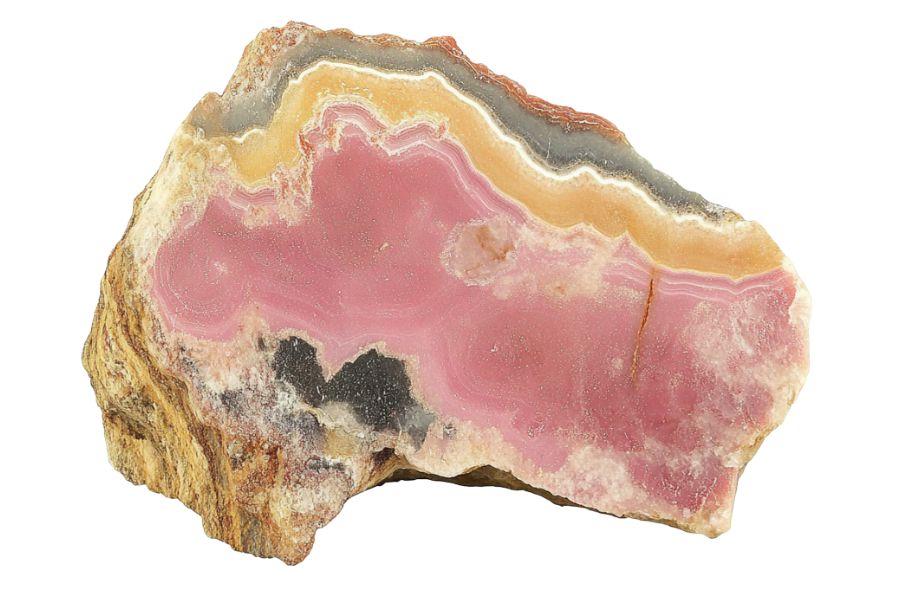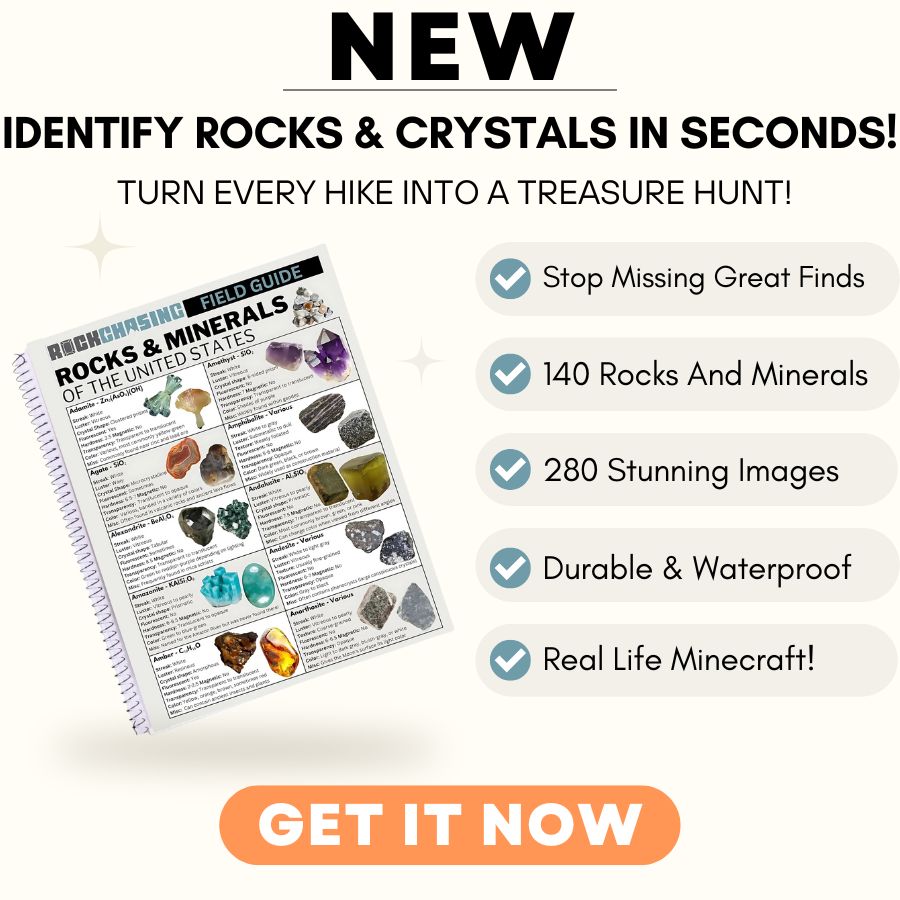Finding rhodochrosite in Georgia can feel like a real challenge. You’ve probably spent hours searching online for good spots, only to end up with vague information. Maybe you’ve even gone to places others recommended and came back empty-handed.
Rhodochrosite hunters in Georgia often waste time and gas money traveling to spots that no longer produce good samples. The pink mineral remains hidden unless you know exactly where to look. Some collectors keep their best locations secret, making it harder for newcomers.
Here, you’ll learn about rhodochrosite locations throughout Georgia that still yield results today. We’ll cover both well-known public areas and some less-crowded spots where your chances of finding quality specimens are much better.
How Rhodochrosite Forms Here
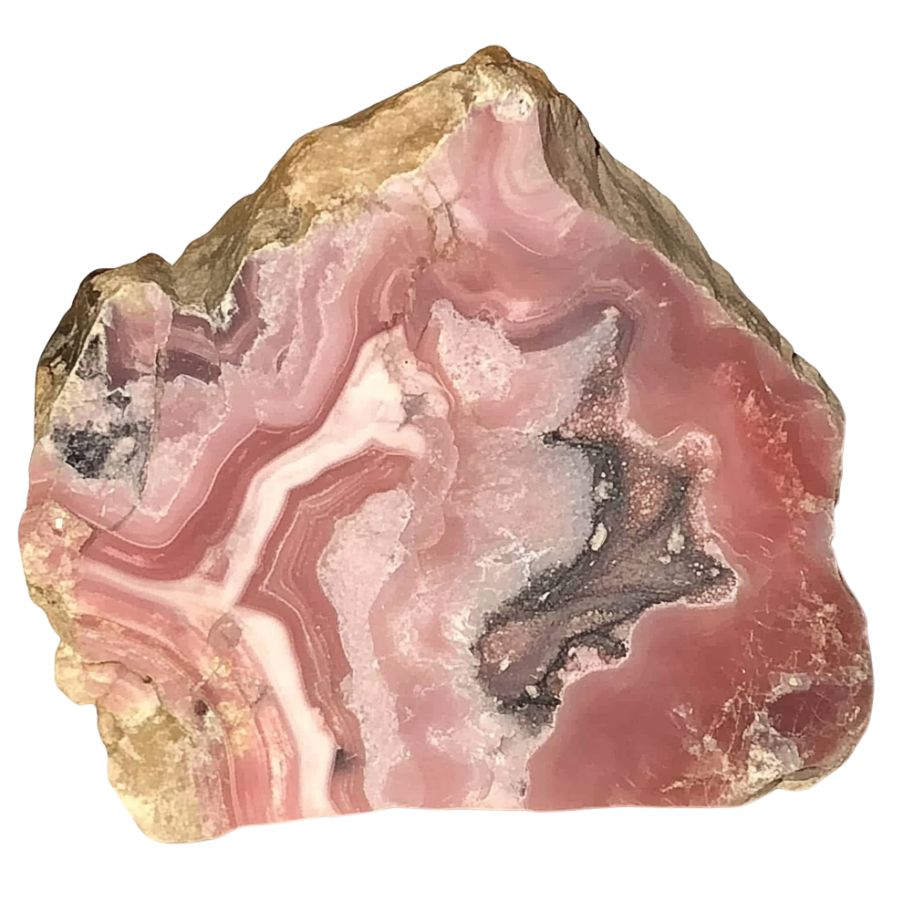
Rhodochrosite forms from manganese-rich waters seeping through cracks in rocks. When these mineral-heavy solutions mix with carbonate materials (like limestone), the magic happens!
Over time, as temperatures and pressures change deep underground, the manganese and carbonate ions come together and slowly crystallize. Sometimes, it forms in beautiful stalactites in empty spaces in rocks, while other times it shows up in hydrothermal veins alongside other minerals.
The most stunning specimens often form when the conditions are just right (not too hot, not too cold) letting the crystals grow slowly into those gorgeous pink rhombohedral shapes we love so much.
Types of Rhodochrosite
Rhodochrosite occurs in several distinct varieties. From delicate pink bands to deep crimson crystals, these variations showcase the diverse beauty of this remarkable mineral.
Pink Rhodochrosite
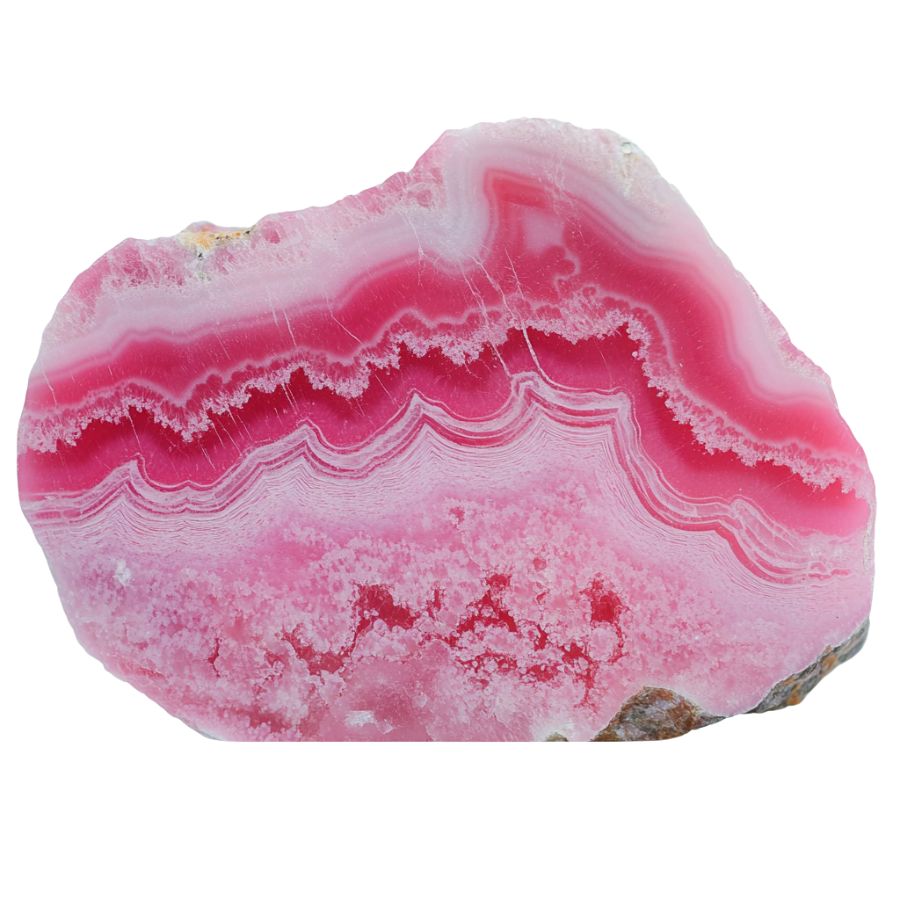
Pink Rhodochrosite displays delicate pink shades that range from soft pastel to deep rose pink. The stone features beautiful banding patterns that create swirling designs throughout its surface.
The translucent to semi-translucent nature of Pink Rhodochrosite adds to its visual appeal. This stone has a special trigonal crystal system that sometimes produces rare transparent crystals.
Fine specimens with clear, transparent crystals are particularly valuable. The best examples show sharp color zones and distinct banding patterns. Stone’s intricate patterns often resemble landscapes or abstract art.
Red Rhodochrosite
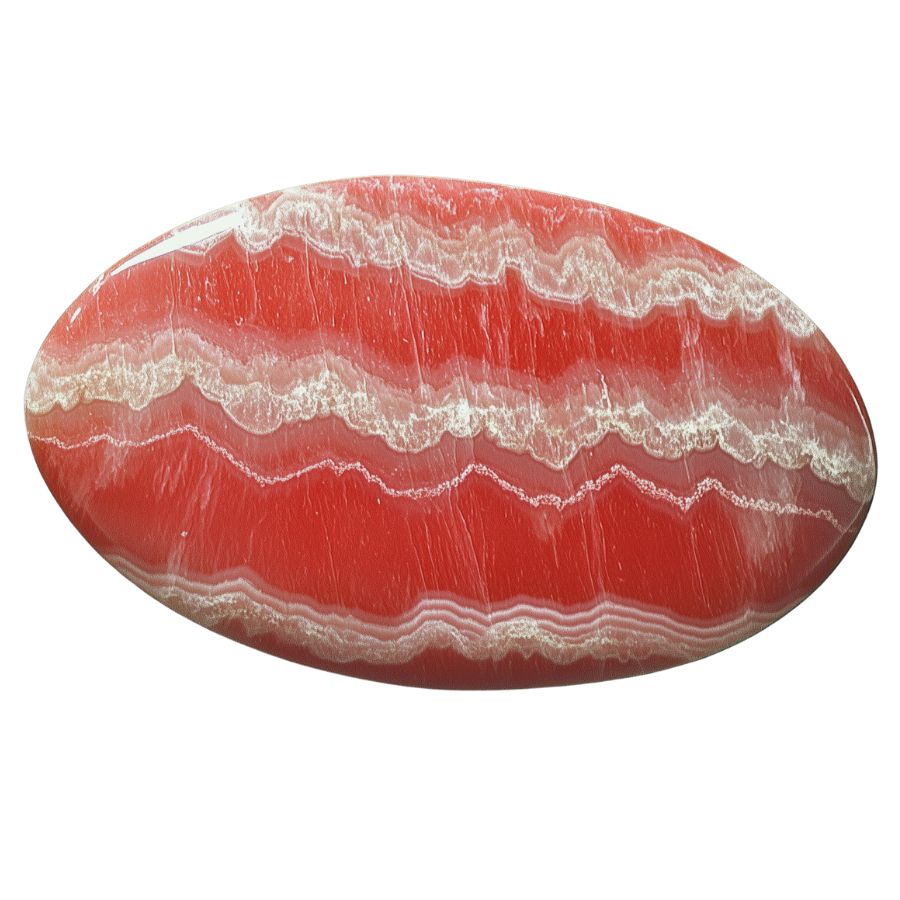
Red Rhodochrosite stands out with its bold, vibrant colors that range from bright red to deep crimson. Its intense red coloring comes from its high manganese content.
This variety can form in interesting shapes, including rhombohedral crystals and stalactite formations. When cut and polished, these formations reveal stunning internal patterns.
The crystal structure of Red Rhodochrosite allows it to form in large, well-defined specimens. These pieces often show sharp color transitions and clear crystal faces. The surface has a bright, glass-like shine when polished.
Some specimens feature dramatic color zoning, where deeper reds blend into lighter shades. This natural gradient effect makes each piece distinct and visually interesting.
Trapiche-like Rhodochrosite
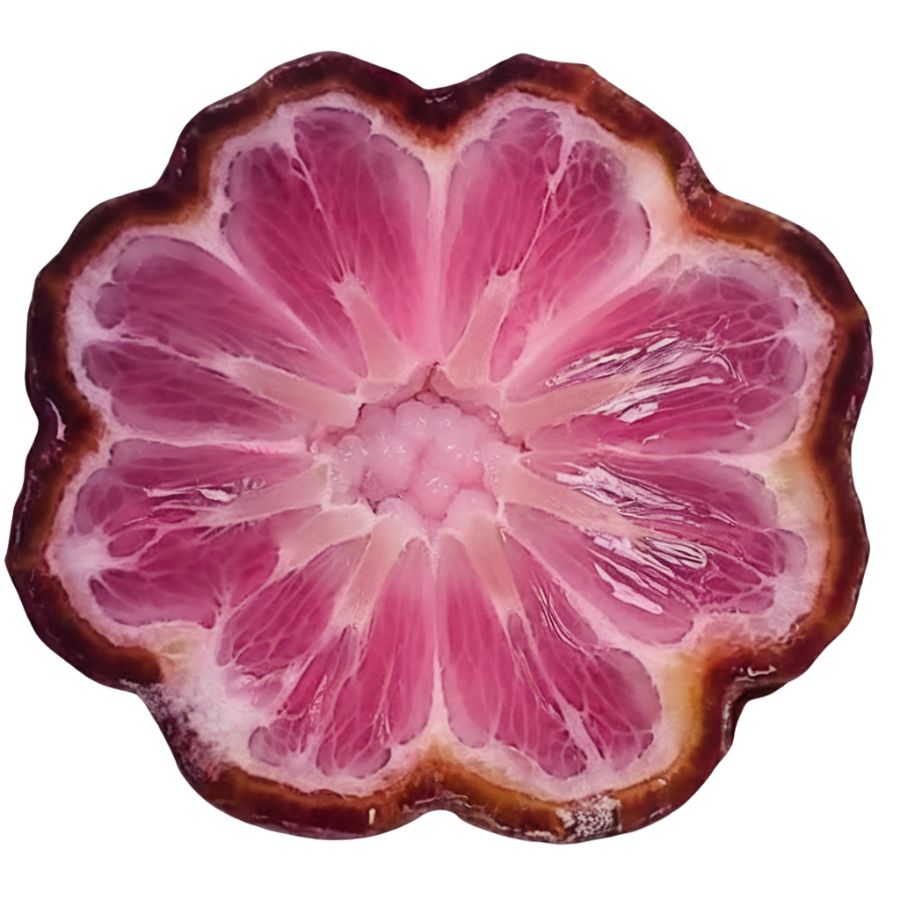
Trapiche-like Rhodochrosite showcases a remarkable star or flower-like pattern that makes it truly special. This pattern forms when crystals grow in a specific way, creating symmetrical rays that extend from the center. The result looks like a wheel with spokes or a blooming flower.
The formation process creates distinct sections within the crystal, each with its own character. These sections join at the center point, creating a natural geometric design.
When the stone is cut perpendicular to its main growth axis, its visual effect is enhanced. This orientation reveals the full beauty of the pattern and shows how the crystal sections fit together perfectly.
South African Rhodochrosite
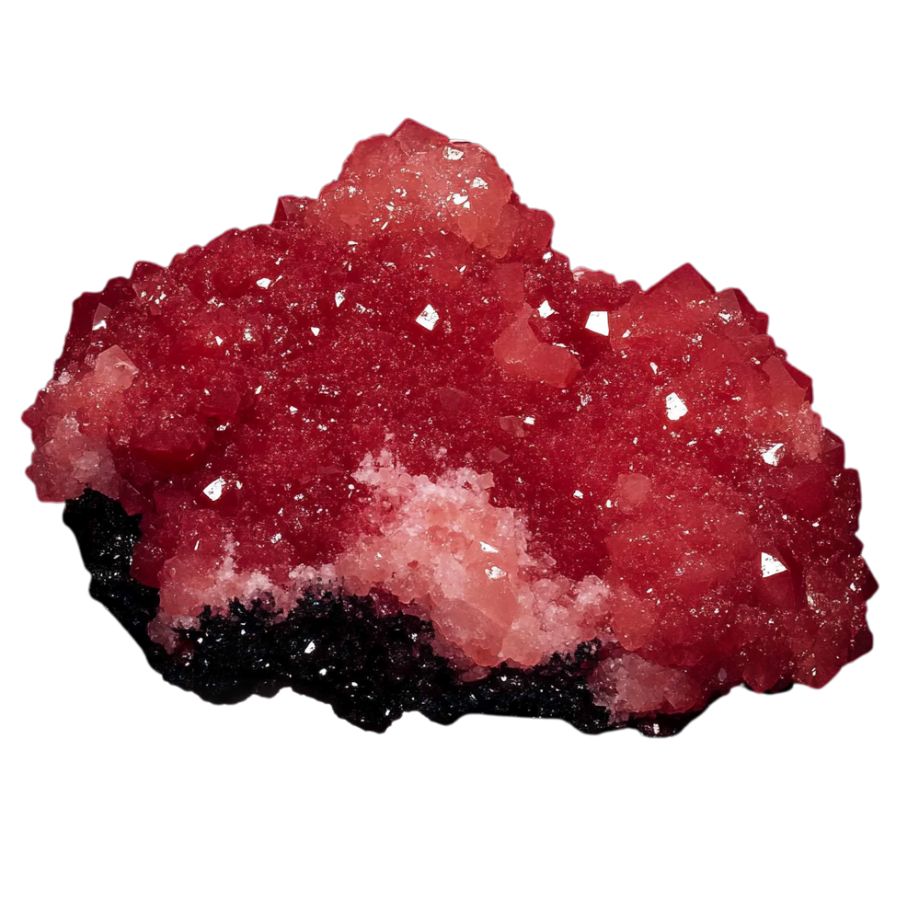
South African Rhodochrosite is known for its deep, rich blood-red color. This intense coloring sets it apart from other varieties. The stone often shows excellent clarity and depth of color which makes it particularly striking.
The internal structure of this variety creates interesting optical effects. When light passes through the stone, it can create a subtle glow that enhances its natural beauty. The crystal structure allows for excellent polish, bringing out the stone’s natural luster.
Many specimens show distinctive growth patterns that form during crystallization. These patterns can create interesting visual effects, from subtle color variations to dramatic geometric designs. The combination of deep color and natural patterning makes each piece unique.
Argentine Rhodochrosite
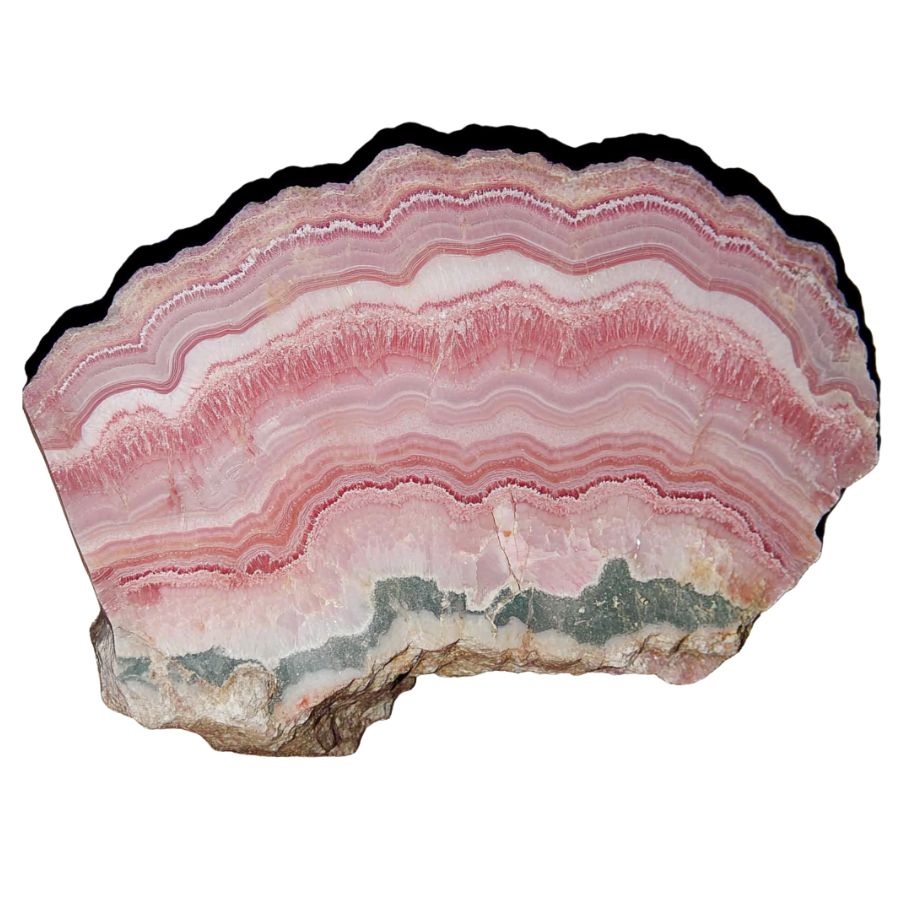
Natural bands of pink and white create stunning patterns across this remarkable stone. Delicate layering resembles fine marble artwork, making each piece unique. The colors shift between pale pink and deep red tones.
Historic significance adds to its charm as the “Inca Rose.” Ancient civilizations treasured these stones for their exceptional beauty. Many specimens show perfect crystal formations that catch and reflect light beautifully.
Exceptional purity sets Argentine specimens apart from others. Crystal formations often grow in perfect rhombohedral shapes. Traditional cutting methods reveal intricate internal patterns that collectors prize.
Colorado Red Rhodochrosite

Brilliant rose-red colors distinguish this remarkable variety. Transparent specimens showcase exceptional clarity and fire. Natural light brings out deep crimson undertones that seem to glow from within.
Outstanding crystallization creates sharp, well-defined faces. Remarkable internal structures form during slow growth periods.
Superior brilliance makes these stones stand out in collections. Natural light reveals complex internal reflections. Fresh specimens maintain their vivid coloring over time. Special cutting techniques enhance the stone’s natural beauty.
Banded Rhodochrosite
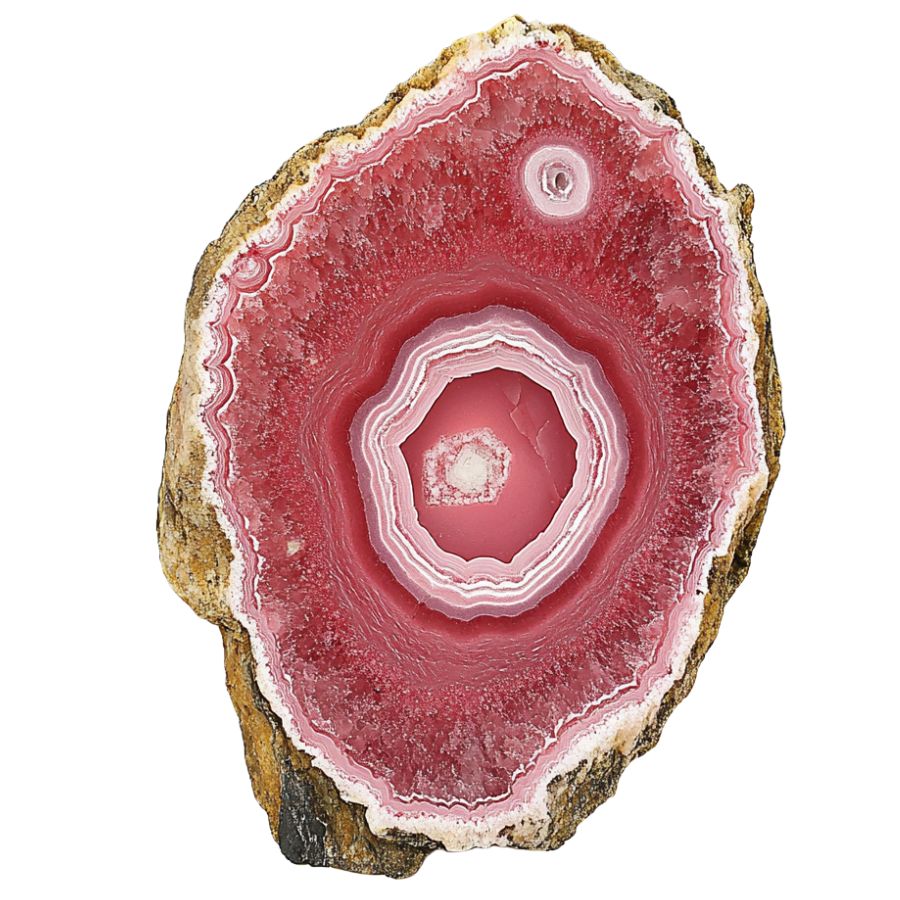
Concentric circles create fascinating patterns throughout this stone. Dramatic bands alternate between light and dark pink shades. Nature’s artistry reveals itself in each cross-section.
Perfect specimens form when mineral-rich water drips slowly over time. Natural processes create stalactite formations with distinct ring patterns.
Multiple layers build up over time to create unique patterns. Natural variation ensures no two pieces look exactly alike. Perfect cross-sections show complete circular patterns.
Peruvian Rhodochrosite
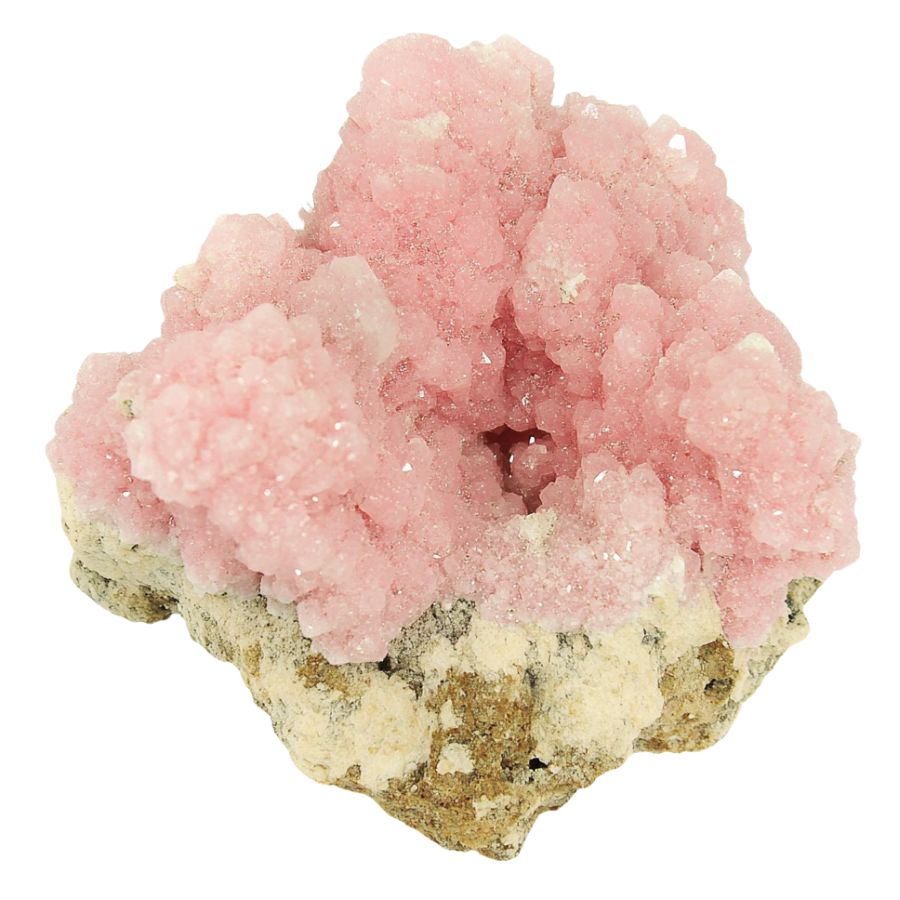
Peruvian Rhodochrosite exhibits a unique blend of pink tones with distinctive crystalline qualities. These stones often develop with exceptional clarity and a glass-like shine.
Crystal formation in these specimens tends to create angular patterns rather than rounded bands. This geometric growth pattern results in fascinating internal architectures that catch and reflect light in unique ways.
The combination of clarity and internal patterns makes these stones particularly fascinating under magnification. Collectors can observe minute details of crystal growth and formation that provide insights into the stone’s development process.
What Rough Rhodochrosite Look Like?
Rhodochrosite in its rough form can be tricky to spot, but once you know what to look for, it’s quite distinctive. Here’s how to recognize Rhodochrosite in its natural state.
Look for the Signature Pink-to-Red Color Range
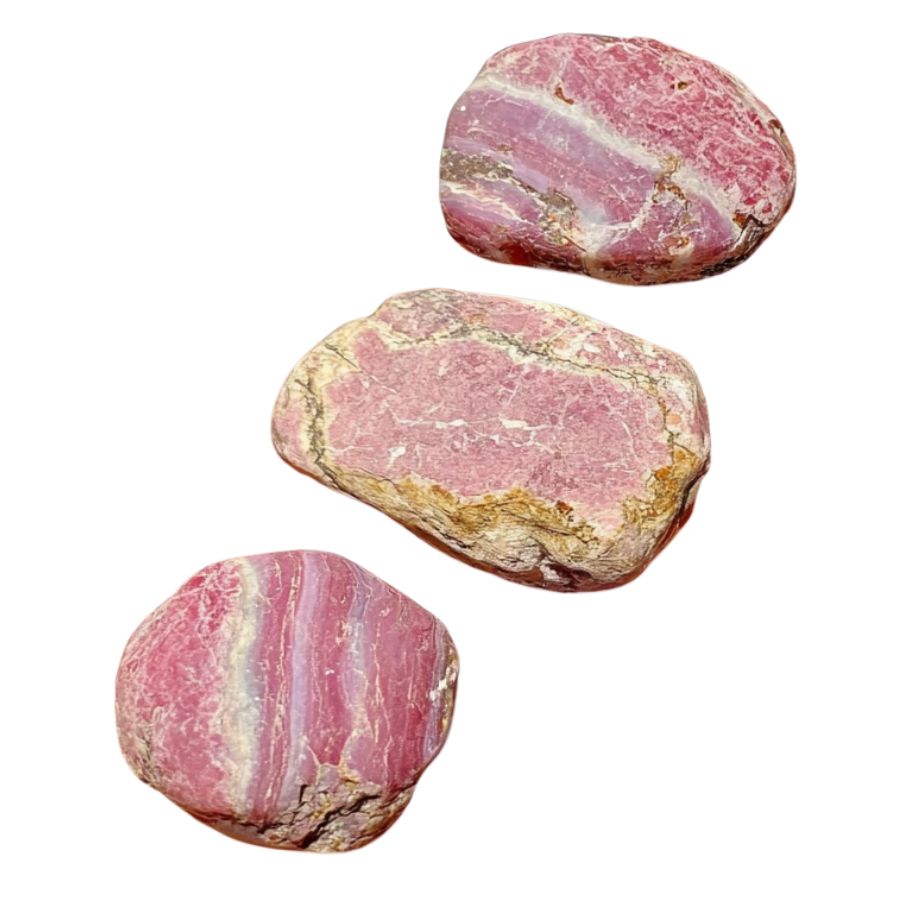
The most obvious telltale sign is its color – typically a warm, rosy pink to deep red. But here’s the thing: it’s not just one solid color. You’ll often spot subtle bands or zones of different pink shades.
Sometimes, you might see hints of brown or even light orange. Don’t dismiss it if it’s not perfectly pink – natural rhodochrosite can be surprisingly varied. The deeper, more saturated reds usually indicate higher-quality specimens.
Check for the Distinctive Crystal Structure
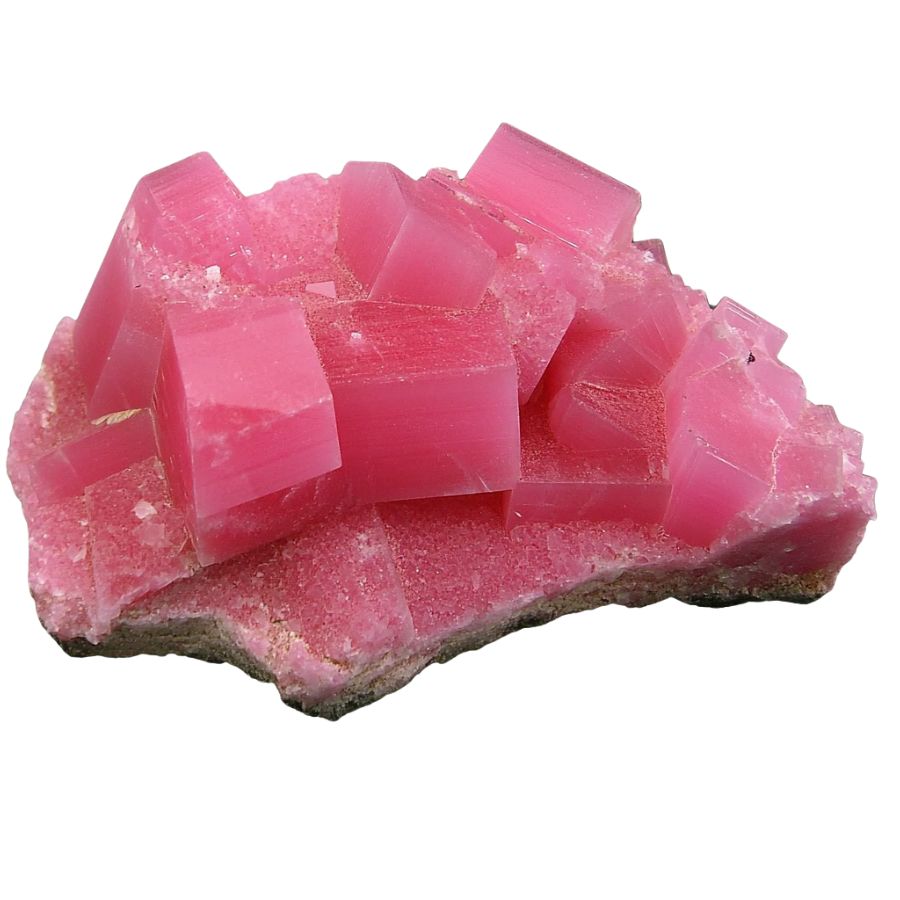
Unlike many minerals, rough rhodochrosite often forms in rhombohedral crystals. Look for angular edges and faces that meet at about 73 degrees. Sometimes you’ll find it in curved, saddle-shaped crystals (super unique!).
The crystals can be transparent to translucent, and they might appear in clusters or as individual specimens.
Examine the Surface Texture and Patterns
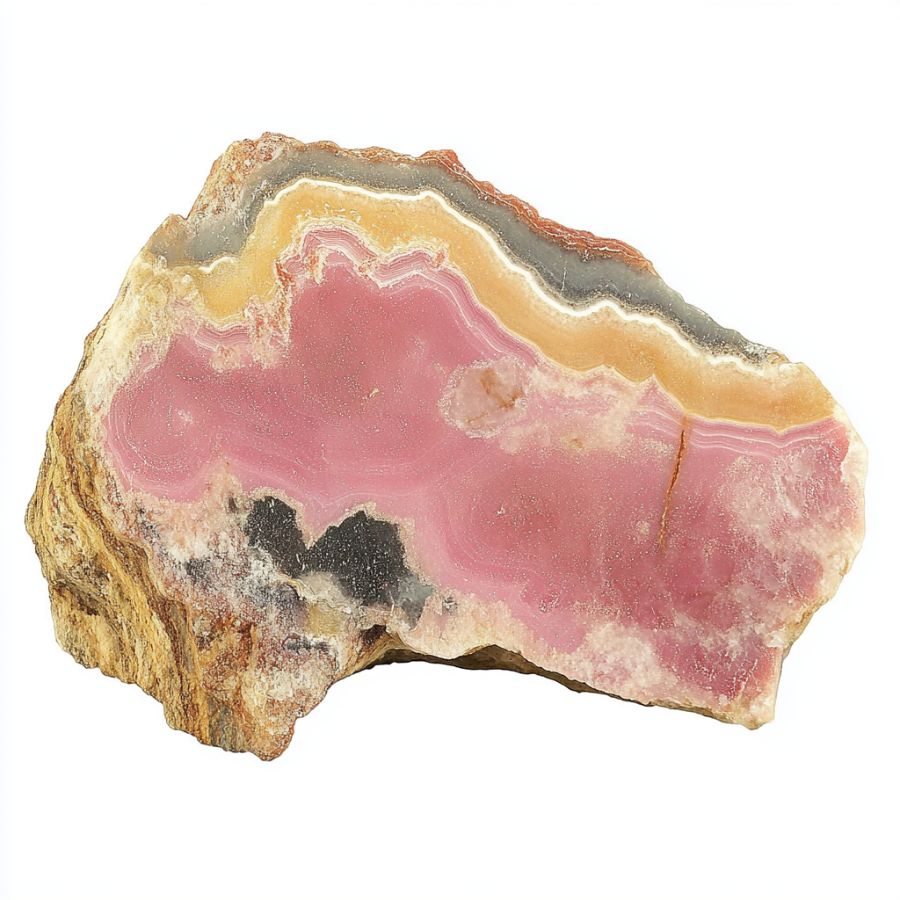
Run your fingers over the surface – rhodochrosite typically has a pearly to vitreous (glass-like) luster. Fresh breaks will show this best.
You might notice concentric banding patterns, especially in massive specimens. These bands often alternate between lighter and darker shades of pink. The surface might feel slightly smooth but not quite as glassy as quartz.
Test the Hardness and Fragility
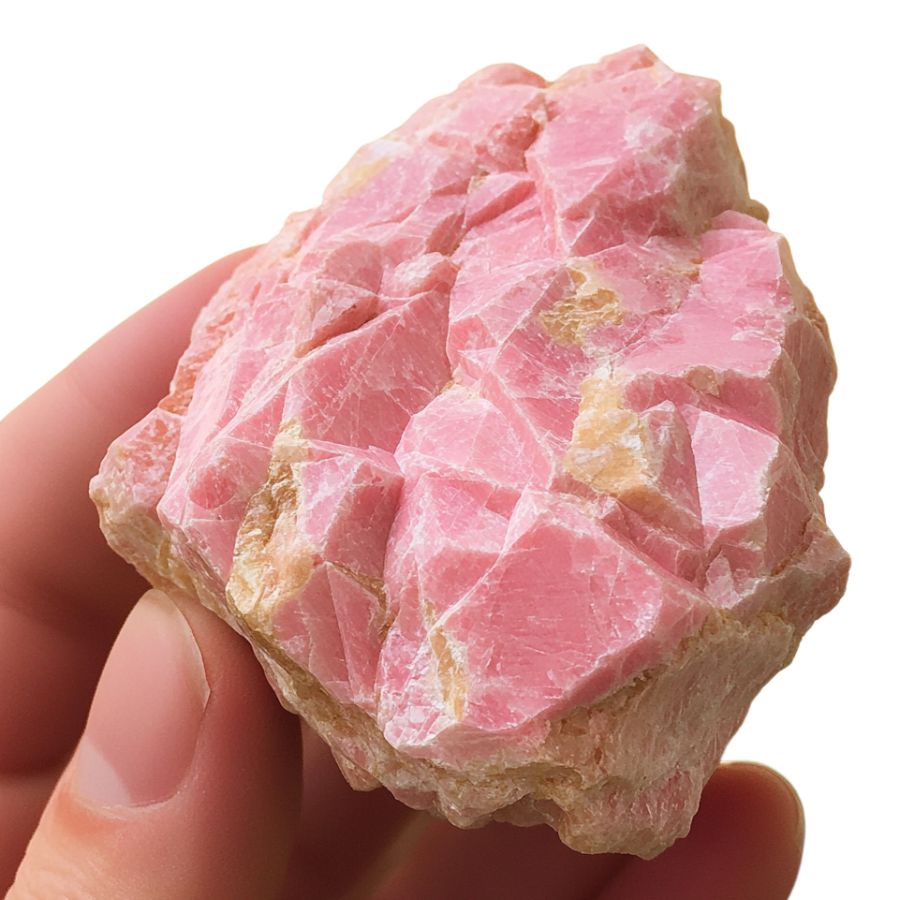
Here’s a crucial tip: rhodochrosite is relatively soft (3.5-4 on the Mohs scale). Try scratching it gently with a copper penny – if it scratches easily, you might have rhodochrosite.
Be gentle though! It’s pretty delicate and can break along cleavage planes. This softness and brittleness help distinguish it from similar-looking minerals like rose quartz, which is much harder.
A Quick Request About Collecting
Always Confirm Access and Collection Rules!
Before heading out to any of the locations on our list you need to confirm access requirements and collection rules for both public and private locations directly with the location. We haven’t personally verified every location and the access requirements and collection rules often change without notice.
Many of the locations we mention will not allow collecting but are still great places for those who love to find beautiful rocks and minerals in the wild without keeping them. We also can’t guarantee you will find anything in these locations since they are constantly changing.
Always get updated information directly from the source ahead of time to ensure responsible rockhounding. If you want even more current options it’s always a good idea to contact local rock and mineral clubs and groups
Tips on Where to Look
Rhodochrosite is a pink to rose-red mineral that often forms in veins and cavities. Here’s where you can typically find this beautiful stone while rockhounding in accessible locations across the US.
Abandoned Mine Areas
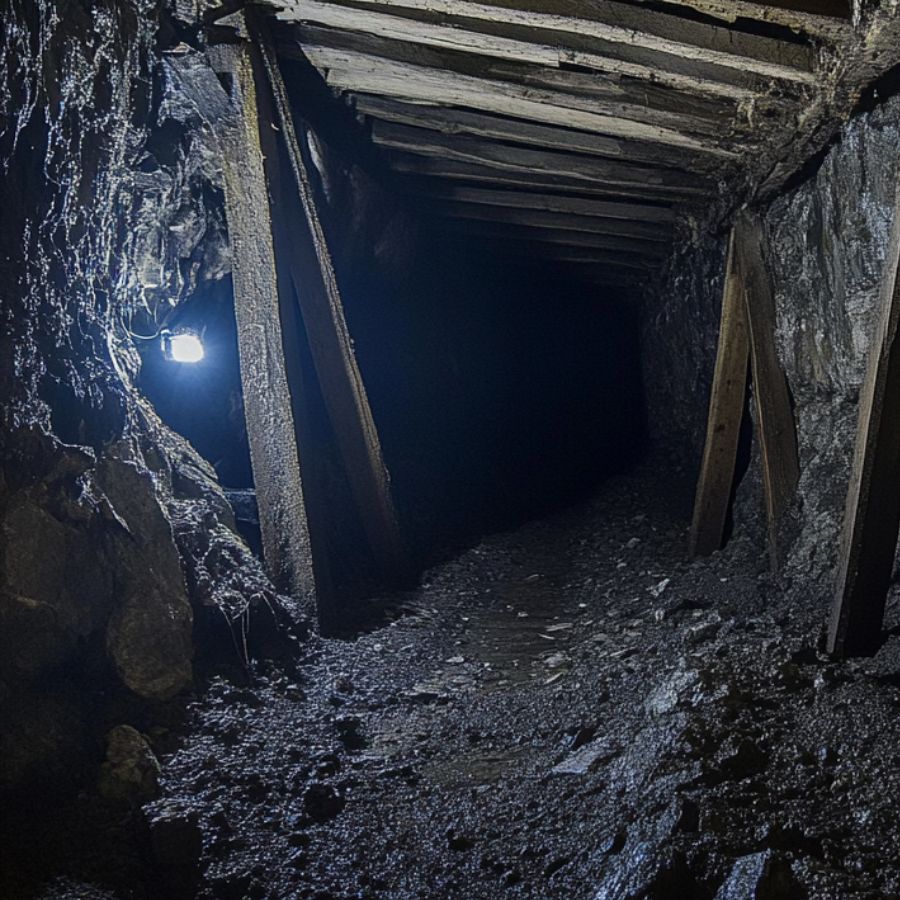
Old mines are great spots to find rhodochrosite. Check the mine dumps and tailings piles where miners discarded unwanted material. These areas often contain smaller pieces that weren’t commercially valuable but are perfect for collectors.
Look for pink-colored rocks in manganese-rich waste piles. The stone frequently appears alongside black manganese minerals, which can serve as a helpful indicator when searching.
Sometimes, you might get lucky and find specimens with beautiful banding patterns that were overlooked during mining operations.
Sedimentary Rock Formations
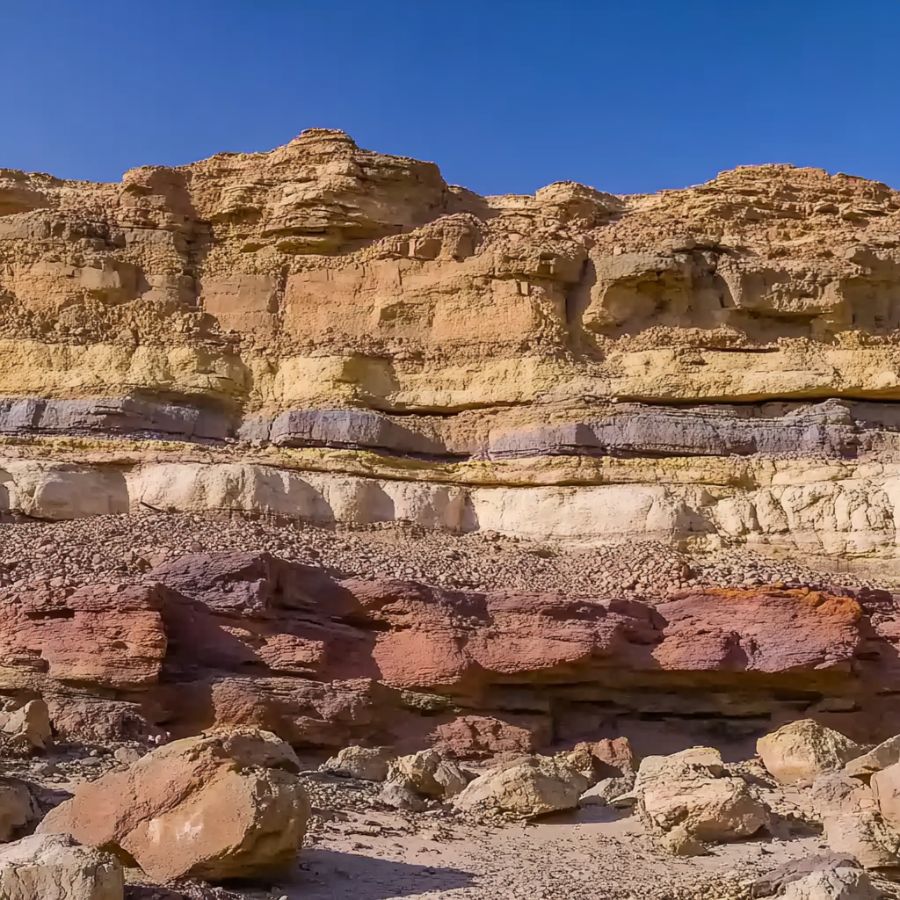
Many sedimentary rocks, especially those containing lots of manganese and calcium carbonate, can host rhodochrosite. Look for areas where limestone and dolomite are common. The stone often forms in the cracks and spaces between these rocks.
While exploring these formations, pay special attention to areas where water has carved out natural exposures, as these spots might reveal hidden rhodochrosite deposits that have been naturally weathered out over time.
Mountain Stream Beds
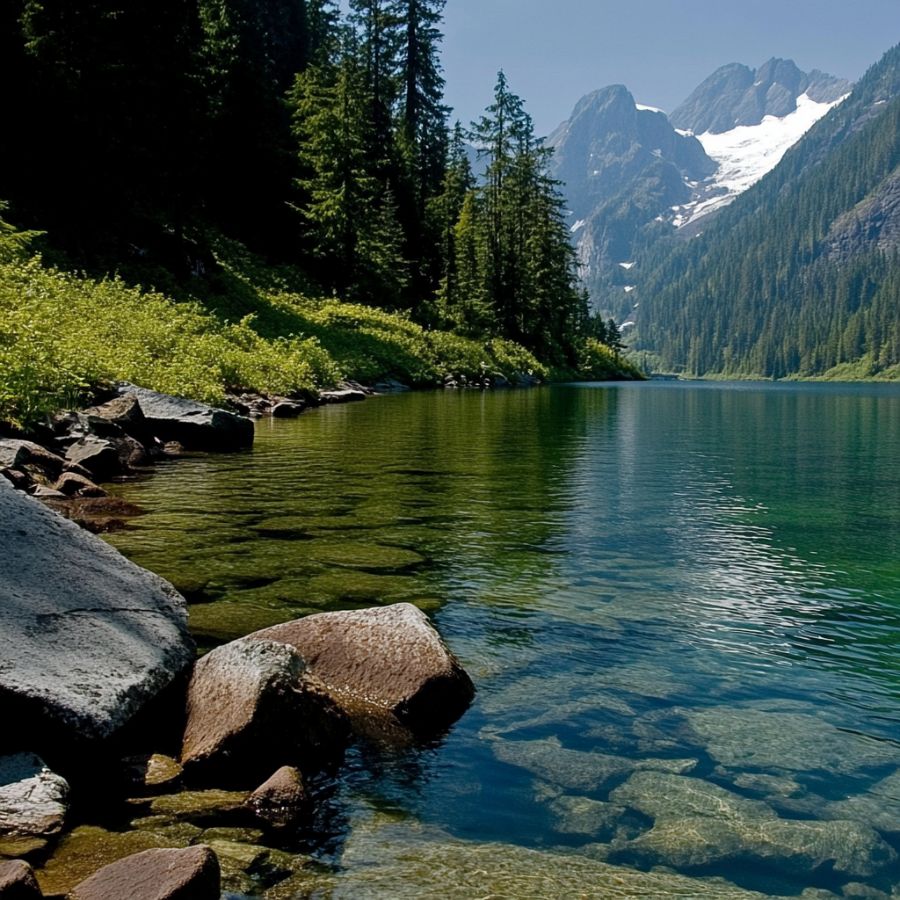
Stream beds in mountainous regions are excellent places to search. Focus on areas where the water has cut through manganese-rich rock formations, as the stream’s natural tumbling action often exposes and smooths rhodochrosite pieces.
During your search, concentrate on spots where the water slows down and creates natural collection points, such as behind large boulders or in quiet pools, because these areas tend to accumulate heavier minerals including rhodochrosite fragments that have broken free from their original source.
Some Great Places To Start
Here are some of the better places in the state to start looking for Rhodochrosite:
Always Confirm Access and Collection Rules!
Before heading out to any of the locations on our list you need to confirm access requirements and collection rules for both public and private locations directly with the location. We haven’t personally verified every location and the access requirements and collection rules often change without notice.
Many of the locations we mention will not allow collecting but are still great places for those who love to find beautiful rocks and minerals in the wild without keeping them. We also can’t guarantee you will find anything in these locations since they are constantly changing.
Always get updated information directly from the source ahead of time to ensure responsible rockhounding. If you want even more current options it’s always a good idea to contact local rock and mineral clubs and groups
Chiatura

Chiatura is an industrial city in the Imereti region of western Georgia. It sits within a deep gorge along the Kvirila River. The city became famous for its massive manganese mines, discovered in 1879. These are among the largest manganese deposits in the world.
The ore layers range from tiny to huge; some are 16 meters thick! Since rhodochrosite is a manganese carbonate mineral, it makes sense that it might be found here. Your best bet for finding this pink stone is to check around the old manganese mines.
The Kvirila River Gorge is another good spot to look, with its layered limestone cliffs that could hide rhodochrosite.
The landscape around Chiatura features dramatic cable cars (called “rope roads” by locals) that once transported miners across the gorge. These historic mining structures offer a unique backdrop for your gem-hunting adventure.
Lincolnton
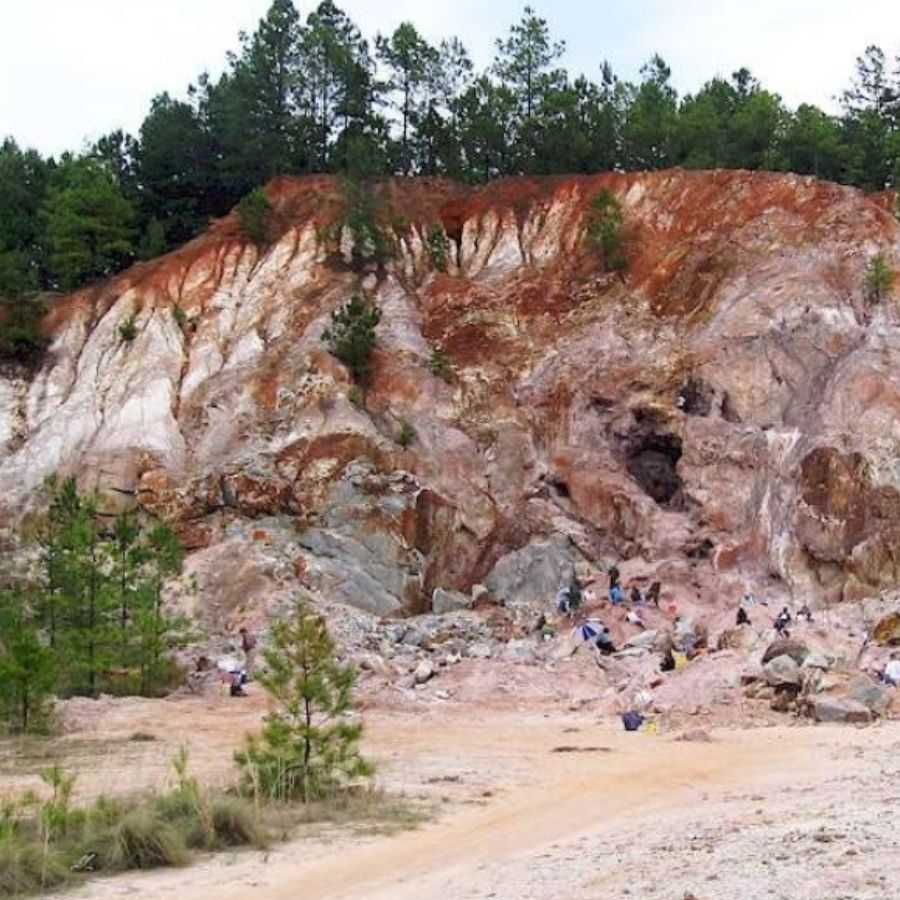
Lincolnton is a small city in Lincoln County, about 40 miles northwest of Augusta. It has rolling hills and is part of the Little River watershed. The area’s rocks have changed over millions of years due to heat and pressure.
Just six miles from Lincolnton is Graves Mountain, a special place for rock collectors. This mountain has unusual minerals formed when ancient rocks changed about 300 million years ago.
The Colley Mine in Lincolnton is known as a place where rhodochrosite can be found. This pink mineral stands out against the other rocks in the area.
Graves Mountain hosts “Rock Swap and Dig” events in spring and fall where you can search for minerals. People come from all over to find not just rhodochrosite but also rutile, kyanite, and lazulite.
Cedartown

Cedartown got its name from the many red cedar trees that once grew there. This city in Polk County has buildings from the 1890s that are now historic landmarks. The ground beneath Cedartown contains limestone, dolomite, and chert rocks.
These create good conditions for minerals to form. If you want to find rhodochrosite in Cedartown, head to the Ledbetter Mine or Reed Mine. Both places have recorded findings of this pink manganese mineral.
The Brewer Mine (also called R.H. Brewer Mine) is another spot worth checking. While looking for rhodochrosite, you might also find other interesting minerals like cacoxenite, goethite, and wavellite. These add to the variety of stones you can collect here.
The town has a rich mining history that dates back many decades, making it an interesting place for both history buffs and rock collectors.
Hiawassee
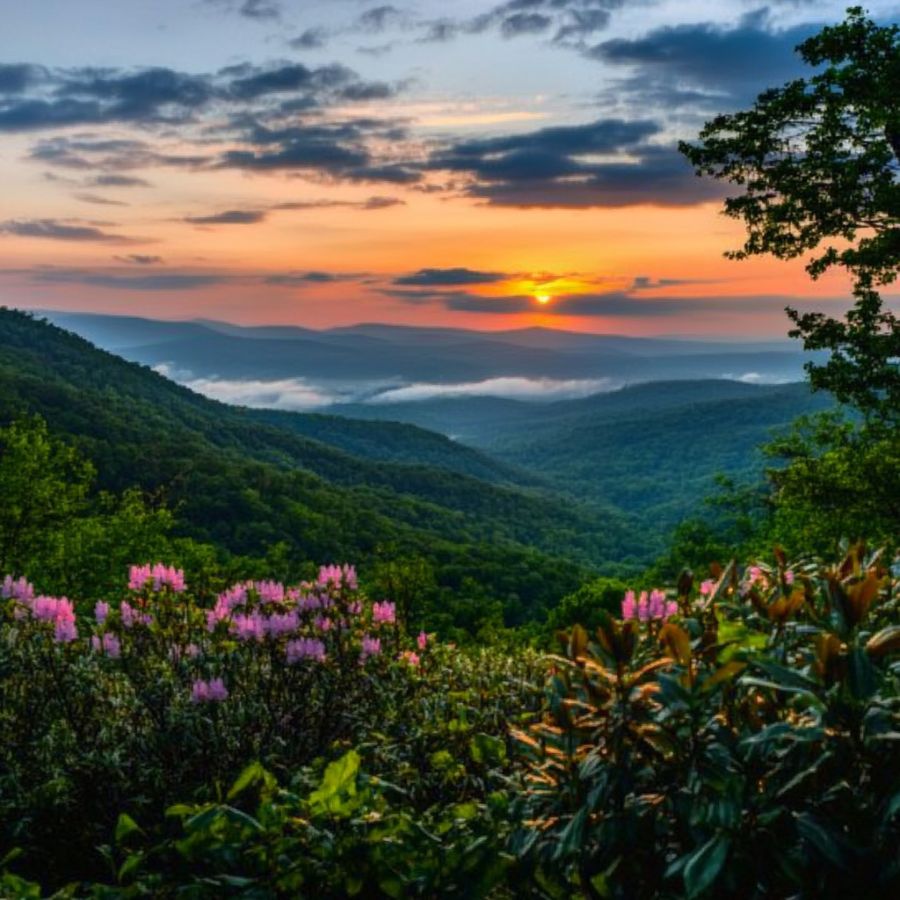
Hiawassee sits in the North Georgia mountains and serves as the main town in Towns County. The name comes from a Cherokee word meaning “meadow.” Lake Chatuge borders the town, offering 128 miles of shoreline for fishing and boating.
The Blue Ridge Mountains surround Hiawassee, with Georgia’s highest peak, Brasstown Bald, nearby. Rhodochrosite hunters should look about 2 miles west-northwest of Hiawassee on what was once the McConnell property. Here, the pink mineral has been found filling small holes in manganese oxide rocks.
Bell Mountain provides another interesting spot to explore. You can drive up a steep road to reach its top, where you’ll get amazing views of Lake Chatuge. Old mining activities have left their mark on Bell Mountain.
The area also offers a bonus for gem hunters. Ruby corundum crystals have been found along Lake Chatuge’s shores near Penland Point.
Elberton
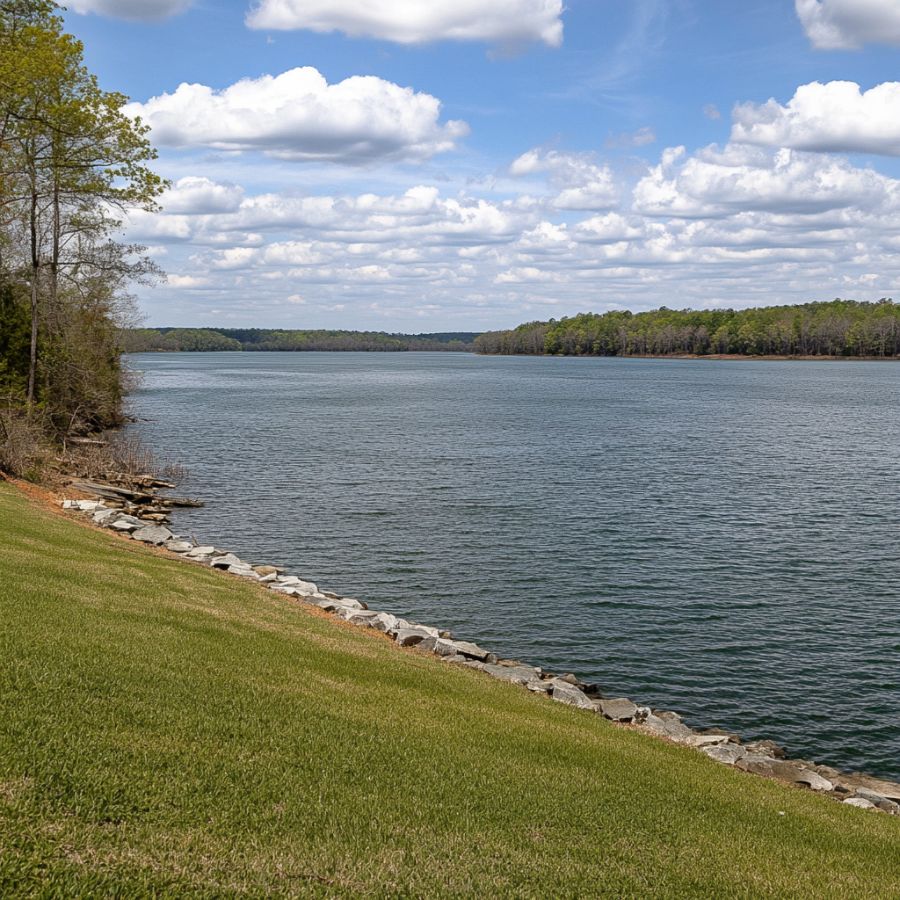
Elberton calls itself the “Granite Capital of the World” for good reason. This city in Elbert County produces some of the finest granite anywhere. Founded in 1803, Elberton has grown around its thriving stone industry.
The city sits on the Piedmont Plateau, a region known for its diverse minerals. While granite gets most of the attention, other stones like rhodochrosite can be found here too. Local quarries occasionally yield this pink-to-red mineral alongside their main granite production.
These working quarries offer a glimpse into how stones are harvested on a large scale. Rock shops in town sometimes have rhodochrosite specimens that were found locally.
Elberton’s Granite Museum tells the story of how stone mining shaped the region and might offer tips on where to look for different minerals in the area.
Places Rhodochrosite has been found by County
After discussing our top picks, we wanted to discuss the other places on our list. Below is a list of the additional locations along with a breakdown of each place by county.
| County | Location |
| Troup | Hogg Mine |
| Wilkes | Jackson’s Crossroads Amethyst Mine |
| White | Dukes Creek Mines |
| Lumpkin | Crisson Gold Mine |
| Bartow | Allatoona Lake |
| Elbert | Brooks Crossroads |
| Habersham | Lazulite occurrence |
| DeKalb | Soapstone Ridge |
| DeKalb | Arabia Mountain |
| Stephens | Panther Creek |
| Cherokee | Ball Ground area |
| Chattooga | Summerville area |
| Burke | Girard area |
| Walker | Pigeon Mountain |
| Spalding | Griffin area |
| Bleckley | Cochran area |
| White | Cleveland area |

